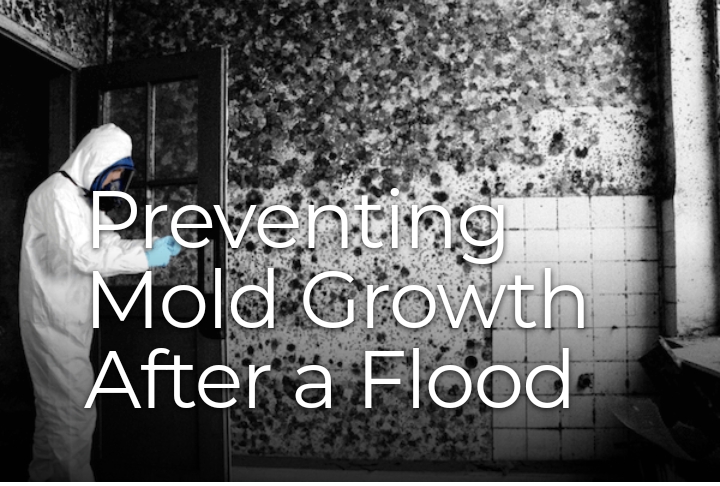
Understanding Mold and Mildew Growth After Floods and Storms
Introduction:
Floods and storms can cause significant damage to homes and businesses, leaving a lasting impact on the health and safety of occupants if not properly addressed. One of the most common and hazardous consequences of water damage is the growth of mold and mildew. In this article, we will explore the factors that contribute to mold and mildew growth following floods and storms and discuss how to prevent and remediate these issues.
The Basics of Mold and Mildew:
Mold and mildew are types of fungi that thrive in damp, humid environments. They reproduce through the release of microscopic spores, which can become airborne and spread throughout a property. When inhaled, these spores can cause respiratory problems, allergies, and other health issues, particularly in individuals with weakened immune systems or pre-existing respiratory conditions.
Factors Contributing to Mold and Mildew Growth After Floods and Storms:
Several factors contribute to mold and mildew growth following floods and storms, including:
- Moisture: Water intrusion from floods, leaks, or excessive humidity creates the ideal environment for mold and mildew growth.
- Organic materials: Mold and mildew feed on organic materials commonly found in homes, such as wood, drywall, and textiles.
- Poor ventilation: Inadequate airflow can trap moisture and humidity, promoting mold and mildew growth.
- Time: Mold and mildew can begin to grow within 24 to 48 hours of water exposure, making prompt action crucial for preventing their spread.
Preventing Mold and Mildew Growth:
To minimize the risk of mold and mildew growth after a flood or storm, consider taking the following steps:
- Remove standing water: Promptly remove any standing water using pumps or wet vacuums to prevent further damage and minimize the risk of mold growth.
- Dry affected areas: Use fans, dehumidifiers, and proper ventilation to expedite the drying process and reduce humidity levels.
- Remove damaged materials: Discard water-damaged materials, such as carpets, insulation, and drywall, to eliminate potential sources of mold and mildew growth.
- Clean and disinfect: Thoroughly clean and disinfect affected surfaces using appropriate cleaning agents and antimicrobial solutions to kill mold spores and inhibit future growth.
- Monitor humidity levels: Regularly check humidity levels in your home and maintain a relative humidity of 30-50% to discourage mold and mildew growth.
- Mold and Mildew Remediation:
If mold and mildew growth is already present, the following steps can help remediate the problem:
- Assess the extent of the issue: Determine the extent of mold and mildew growth and identify the underlying sources of moisture.
- Containment: Isolate the affected area to prevent the spread of mold spores to other parts of the property.
- Personal protection: Wear protective gear, such as gloves, masks, and goggles, to minimize exposure to mold and mildew.
- Removal of contaminated materials: Discard mold-infested materials in sealed plastic bags to prevent cross-contamination.
- Cleaning and disinfecting: Scrub and clean non-porous surfaces with appropriate cleaning solutions and use HEPA-filtered vacuums to remove mold spores from the air.
- Structural repairs: Address the sources of water intrusion or damage, such as leaks or damaged roofing, to prevent future mold and mildew growth.
- When to Call a Professional:
In some cases, mold and mildew growth may be extensive or difficult to remediate. If you are unsure about the extent of the problem, lack the necessary equipment or knowledge, or if the affected area is larger than 10 square feet, consider calling a professional mold remediation company. These specialists have the expertise,
equipment, and training to safely and effectively address mold and mildew issues in your home or business.
Health Risks Associated with Mold and Mildew Exposure:
Prolonged exposure to mold and mildew can lead to a variety of health issues, particularly for those with pre-existing respiratory conditions or weakened immune systems. Some common health risks include:
- Allergic reactions: Mold and mildew exposure can cause allergic reactions, such as sneezing, runny nose, itchy eyes, and skin irritation.
- Respiratory problems: Inhaling mold spores can exacerbate asthma symptoms and cause respiratory infections.
- Immune system issues: Mold exposure can weaken the immune system, making individuals more susceptible to infections.
- Toxic mold syndrome: Exposure to certain types of toxic mold, such as Stachybotrys chartarum (also known as “black mold”), can lead to severe health complications, including neurological symptoms and organ damage.
The Importance of Mold and Mildew Prevention:
Taking proactive measures to prevent mold and mildew growth is essential for maintaining a healthy and safe living environment. By addressing water damage promptly, maintaining proper humidity levels, and ensuring adequate ventilation, you can minimize the risk of mold and mildew growth and protect the health of your family or employees. If you do have mold and mildew, you can contact a mold removal company to help solve the problem
Conclusion:
Understanding the factors that contribute to mold and mildew growth after floods and storms is crucial for preventing and addressing these issues. By taking appropriate preventative measures and seeking professional assistance when necessary, you can safeguard your property and the health of its occupants from the harmful effects of mold and mildew.







